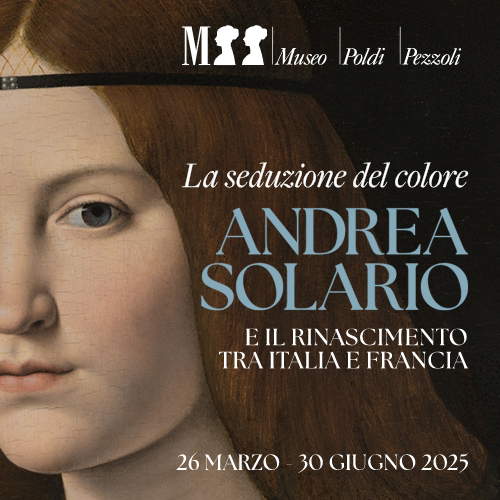Pisa, what to see: 15 places not to miss
Pisa is a city that lives suspended between the past and the present: world-famous for its Leaning Tower, Pisa offers much more to its visitors than one can imagine. Situated along the banks of theArno River, Pisa was one of the four Maritime Republics, a relevant center of trade, a crossroads of cultural exchange, and even today its legacy can be seen in the splendid architectural and artistic heritage that invades its every street, its every palace, its every corner. Discovering Pisa also means getting in touch with its university traditions, as the city is home to one of the oldest and most prestigious universities in Europe, founded in 1343.
Many tourists come to Pisa with the idea of taking the classic photo with the leaning tower, but a thorough visit allows them to discover a rich set of monuments, churches, squares and museums that tell the story of this city. From the imposing architecture of the Piazza dei Miracoli complex, to the intimate atmosphere of medieval streets and ancient palaces, each place in this Tuscan city has something to be noted and remembered for, and allows for a deeper understanding of the city, as well as its most famous icon.
Indeed, Pisa’s artistic and architectural heritage is truly diverse: alongside the masterpieces of Pisan Romanesque architecture, such as the Cathedral and Baptistery, one can admire Gothic, Renaissance and contemporary works ( Keith Haring’sTuttomondo mural is very famous), which testify to the city’s ability to renew itself and accommodate the most diverse suggestions. Another aspect that makes Pisa unique is its connection with the Arno, whose banks, known as the Lungarni, are one of the most beautiful places in the city. This is overlooked by elegant historic buildings, now home to museums and cultural institutions. Walking along the Lungarni, especially at sunset, offers one of the most picturesque views of the city, with the reflections of lights on the water creating a magical atmosphere. In addition, the Lungarni are the perfect vantage point for traditional events such as the Luminara di San Ranieri, a celebration that illuminates the riverbanks with thousands of candles in honor of Pisa’s patron saint, or such as the Gioco del Ponte, an ancient contest that has been held on the Ponte di Mezzo for centuries. In this article, an overview of 15 places not to miss during a visit to Pisa.
1. Square of Miracles
The Piazza dei Miracoli (Square of Miracles) is undoubtedly the main attraction in Pisa, and is one of the most famous and visited monumental complexes in the world. Its name, coined by Gabriele D’Annunzio (who called it the “meadow of miracles” in his novel Forse che sì forse che no), derives from the almost divine charm of its monuments: the Duomo, the Baptistery, the Campanile (better known as the Leaning Tower) and the Monumental Cemetery. The square is the heart of the city’s religious center and a masterpiece of medieval architecture. The Leaning Tower, begun in 1173, has become famous for its progressive and unstoppable tilting, caused by a subsidence of the ground. Next to the Tower stands the Cathedral of Santa Maria Assunta, a perfect example of the Pisan Romanesque style, with Islamic and Byzantine influences, testifying to the many cultural exchanges that took place over the centuries. The Baptistery of San Giovanni, with its combination of architectural styles, is the largest baptistery in Italy. Finally, the Monumental Cemetery, a sacred cemetery according to medieval tradition, contains tombs and sarcophagi of considerable historical importance, as well as a cycle of frescoes with works by artists such as Buonamico Buffalmaco, Benozzo Gozzoli and others.
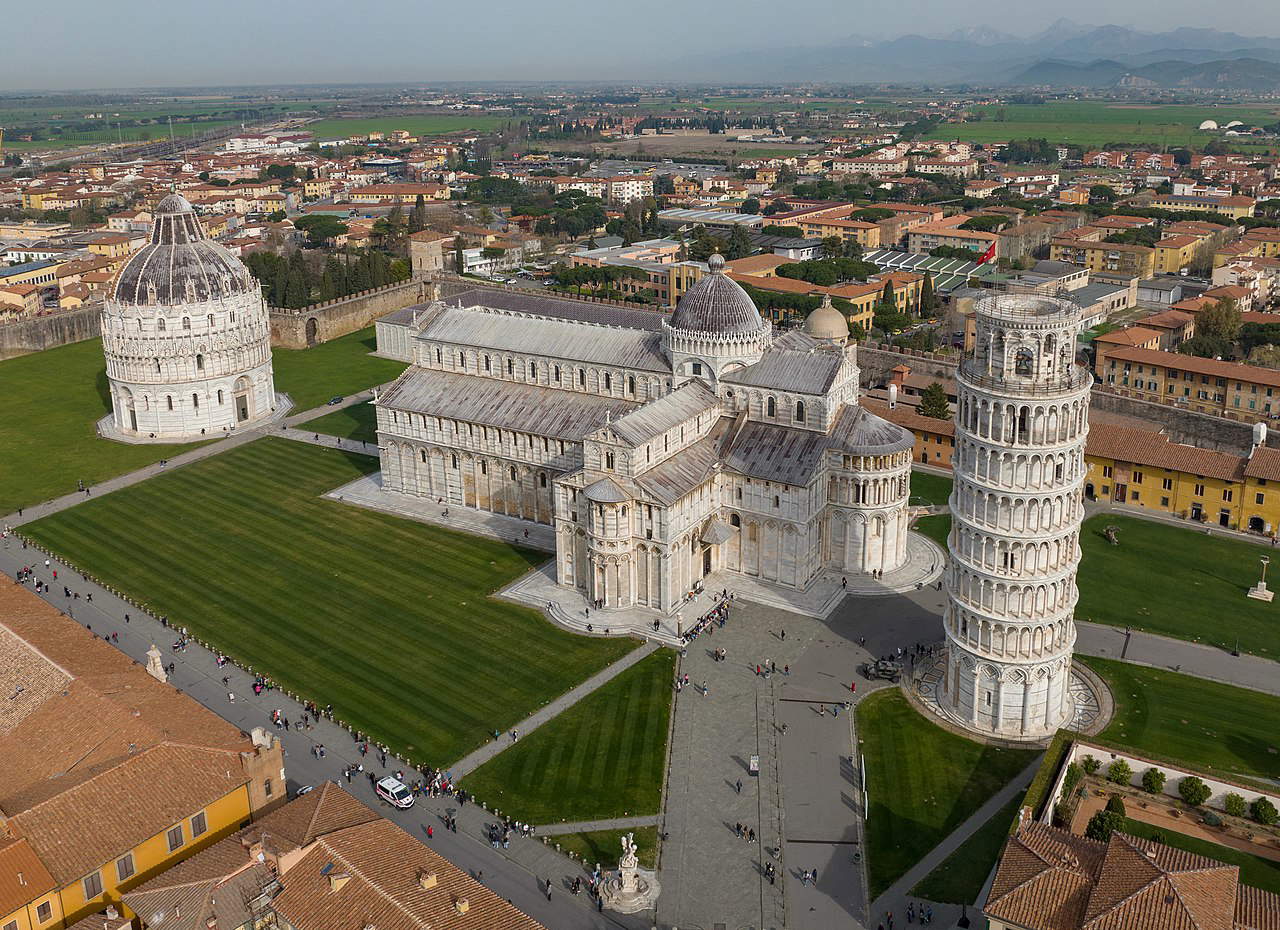
2. The Leaning Tower
The Tower of Pisa, or Leaning Tower, is one of the most iconic monuments in the world. At 57 meters high, the tower is actually the bell tower of Pisa Cathedral, and it is famous for its characteristic tilt. Construction began in 1173, but was halted after the first three stories were built due to subsidence of the ground below. This caused the famous inclination, which gave the monument a unique charm. Work then resumed in 1275, resulting in three more floors, plus the belfry, added in the mid-14th century. Over the centuries, many attempts have been made to stabilize it, and the latest work, which began in 1990 and was completed in 2001, reduced the inclination by a few degrees and made it safe for visitors. Every year, thousands of tourists climb its 294 steps to enjoy the view of the city and surrounding hills.

3. The Cathedral of Pisa
The Cathedral of Santa Maria Assunta is the spiritual cornerstone of Pisa and one of the most important examples of Pisan Romanesque architecture. Begun in 1063 by architect Buscheto, it represents a fusion of classical, Byzantine, Lombard and Islamic elements, evidence of Pisa’s cultural openness in its heyday. The white and gray marble facade, embellished with colored marble inserts, features a magnificent central portal. Inside, the building is a triumph of art and faith, with mosaics, frescoes, and the famous pulpit by Giovanni Pisano. The gilded coffered ceiling and chandelier complete the spiritual and artistic experience.
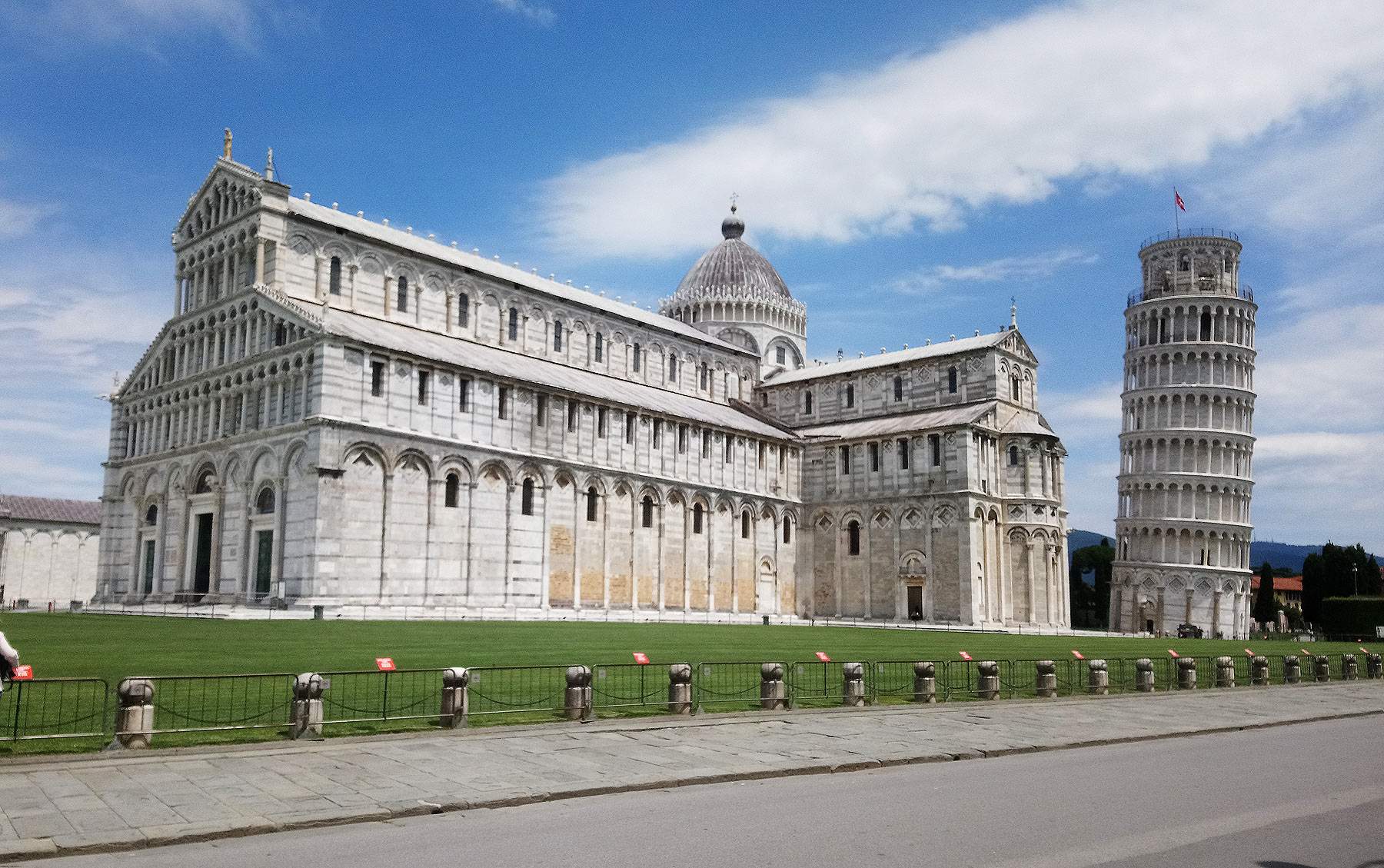
4. The Baptistery of San Giovanni
The Baptistery of Pisa is the largest in Italy, and its construction, begun in 1152, continued for more than two centuries. This long construction phase is reflected in the architectural style, which blends Romanesque and Gothic elements. Indeed, the lower part is characterized by round arches, typical of the Romanesque style, while the upper part, completed by Nicola and Giovanni Pisano, features pointed arches, typical of the Gothic style. The interior is sober, but dominated by the large octagonal baptismal font, still used today for religious ceremonies, and the magnificent pulpit carved by Nicola Pisano, considered one of the masterpieces of medieval Italian sculpture.
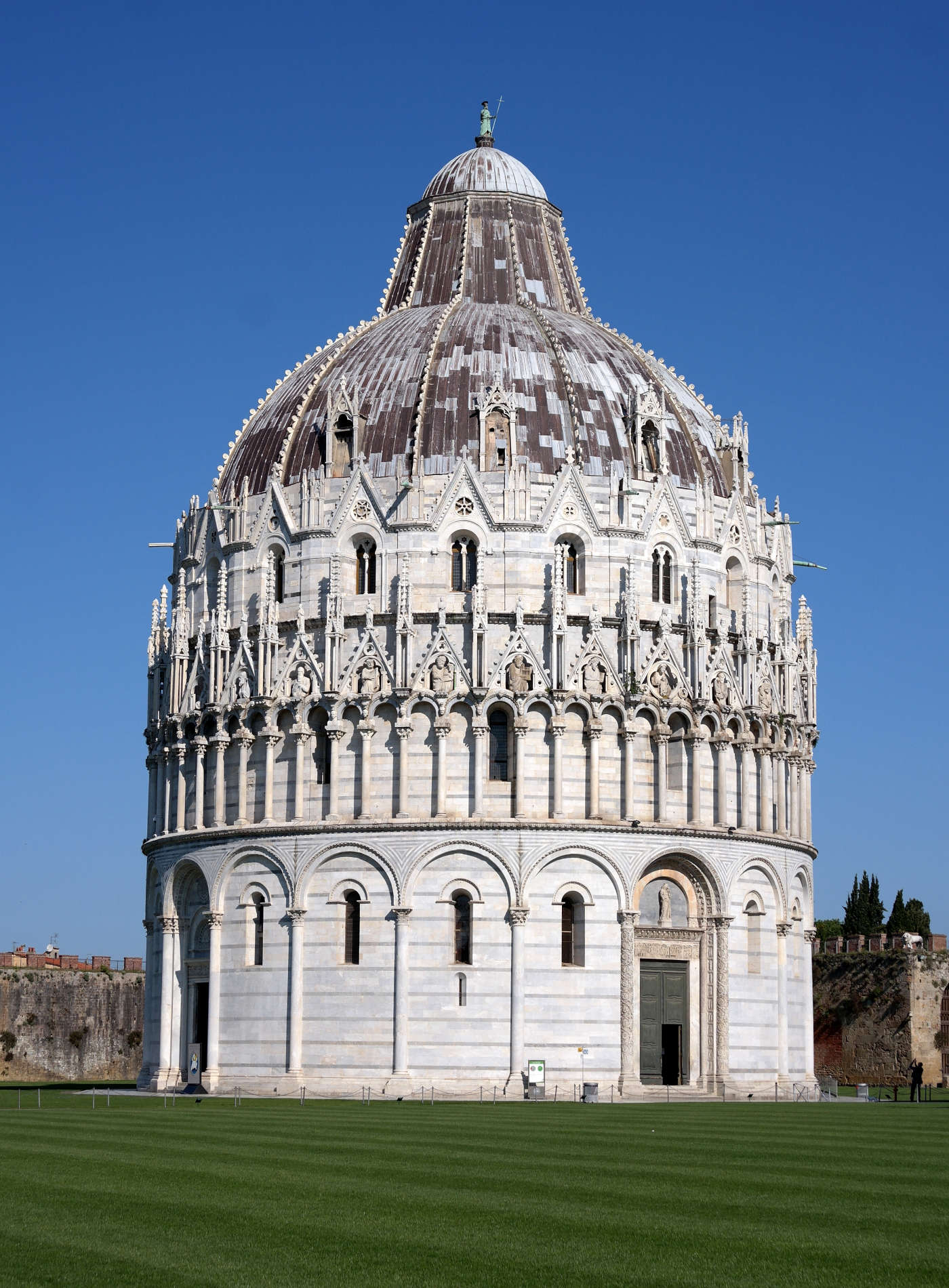
5. The Monumental Cemetery
Pisa’s Monumental Cemetery, located in the northern part of Piazza dei Miracoli, was built in 1277 to preserve the tombs of its most distinguished citizens, and according to tradition the ground was that of Mount Calvary, brought from the Holy Land by Archbishop Ubaldo Lanfranchi. Its Gothic architecture, with its cloister decorated with arcades, creates an atmosphere of peace and recollection. Inside are numerous frescoes of the 14th-century school and monumental tombs. Unfortunately, many of the frescoes were damaged during World War II, but some have been restored, and especially after restoration, the sinopites resurfaced with which the Sinopie Museum was created, a unique institution that allows visitors to discover the history of this unique preparatory technique for frescoes. Among the frescoed masterpieces are Buonamico Buffalmacco’sTriumph of Death and scenes painted by Benozzo Gozzoli.
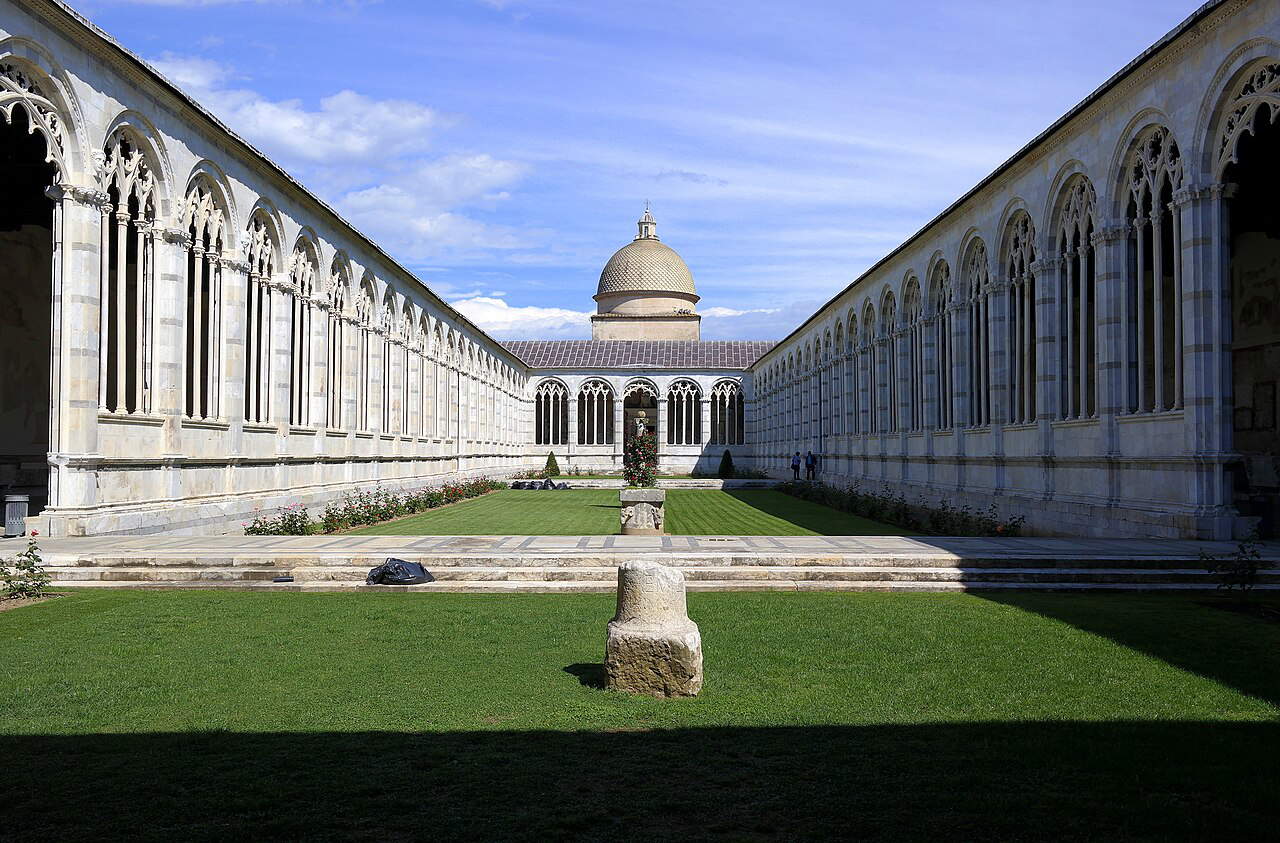
6. The church of Saint Mary of the Thorn
The church of Saint Mary of the Thorn is one of Pisa’s Gothic jewels, located on the banks of the Arno River. Built in 1230, this small church takes its name from the “thorn” of Christ’s crown, which according to tradition was kept there for a time. Despite its small size, the church is a masterpiece of sculptural decoration, with numerous statues and ornaments finely crafted by artists such as Andrea and Nino Pisano. Originally built at river level, it was dismantled and rebuilt higher up in 1871 to avoid damage caused by flooding of the Arno. The interior is simple and in stark contrast to the decorative richness of the exterior, but it contains a statue of the Madonna of the Rose by Nino Pisano.

7. The National Museum of St. Matthew
The Museo Nazionale di San Matteo is located in a former Benedictine convent along the Arno River. It is one of the most important museums in Tuscany for its rich collection of medieval and Renaissance art. Inside you can admire sculptures, ceramics, goldwork and paintings from churches and palaces in and around Pisa. Among the most famous works are sculptures by Nicola and Giovanni Pisano, as well as paintings by great Italian masters such as Donatello, Beato Angelico, and Masaccio. A section of the museum is devoted to wooden works of art, with crucifixes (the room of painted crosses is not to be missed), as well as ornate reliquaries that testify to the skill of Pisan craftsmen. The museum allows a journey through Pisan sacred art, revealing the city’s hidden treasures.
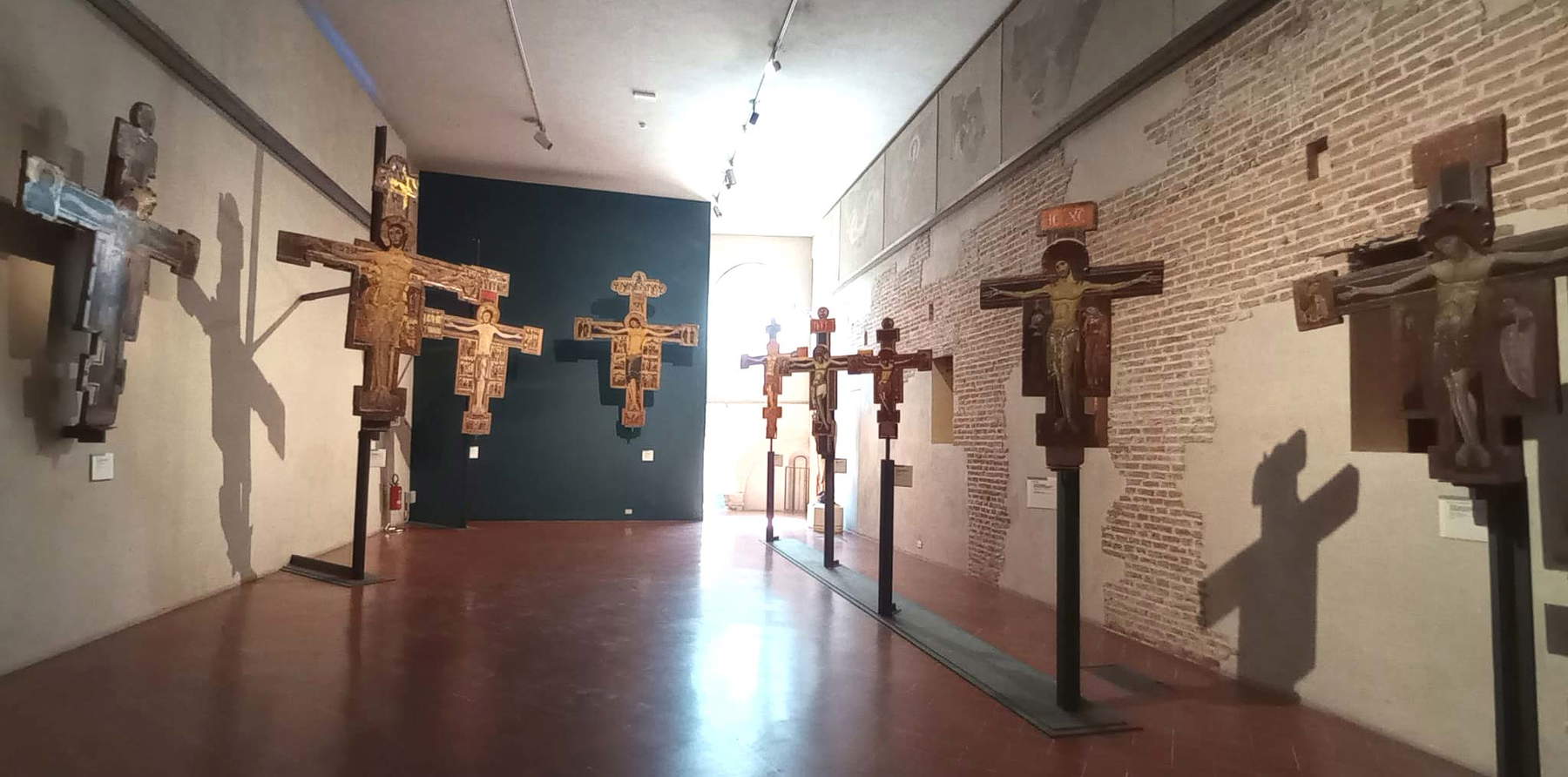
8. Knights’ Square
The Piazza dei Cavalieri is one of the symbolic places of Pisa. In the Middle Ages, it was the political and administrative center of the city, but it was transformed into a monumental square in the 16th century to a design by Giorgio Vasari, commissioned by Cosimo I de’ Medici. In the center of the square is the statue of the grand duke, placed in front of the steps of the magnificent Palazzo della Carovana, home of the Scuola Normale Superiore di Pisa, one of the most prestigious universities in Italy. The square is surrounded by historic buildings, such as the Palazzo dell’Orologio and the church of Santo Stefano dei Cavalieri, and is a perfect example of Renaissance architecture. Walking through this square means reliving the historical events related to theOrder of the Knights of St. Stephen, founded in 1562.
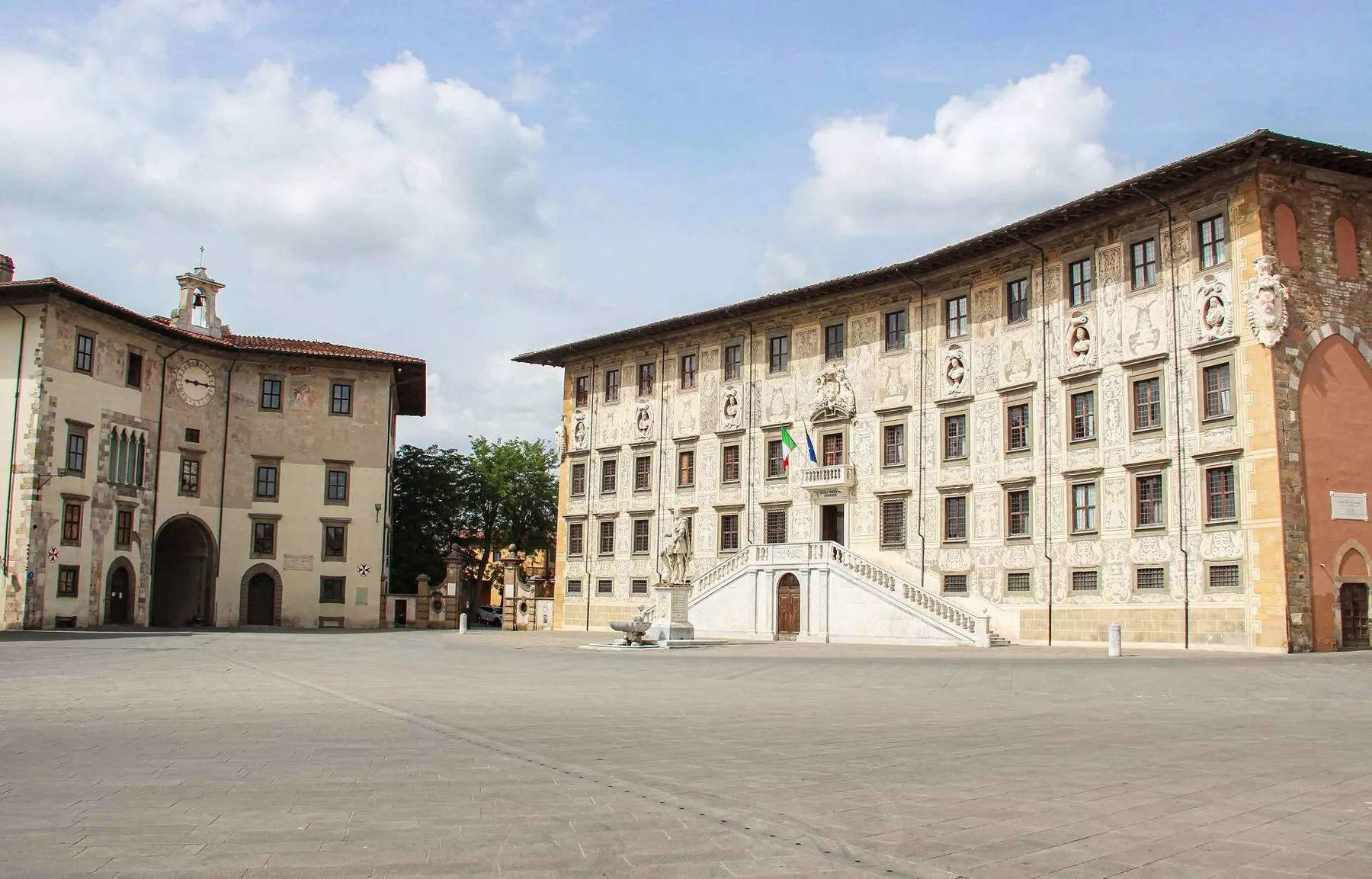
9. The Palace of the Caravan
The Palazzo della Carovana, located in Piazza dei Cavalieri, is one of Giorgio Vasari’s greatest architectural masterpieces. Originally built in the 14th century as the Palazzo degli Anziani, it was transformed in 1562 to become the headquarters of the Order of the Knights of St. Stephen. The facade, decorated with sgraffiti representing allegories and zodiac signs, is a perfect example of Vasari’s mannerism. The palace, now home to the Scuola Normale Superiore, is one of the symbols of Italian academic culture. The interior houses a rich collection of period furnishings and decorations, as well as a valuable historical library. The name “Carovana” comes from the name of the knights’ training, which prepared members of the Order to defend the coast of the Grand Duchy of Tuscany from Ottoman attacks.

10. The Museum of the Opera del Duomo
The Museo dell’Opera del Duomo is located next to the famous Piazza dei Miracoli and is dedicated to the preservation and display of works of art from the Duomo, Baptistery and Camposanto. The museum collects sculptures, paintings, textiles, goldwork and manuscripts that testify to the rich artistic history of the Pisan cathedral. Among the most important pieces are the statues by Giovanni Pisano, originally placed on the outer crowning of the Baptistery, and the large bronze Griffin, brought to Pisa as spoils of war during the Crusades. The museum offers a comprehensive view of Pisan sacred art.
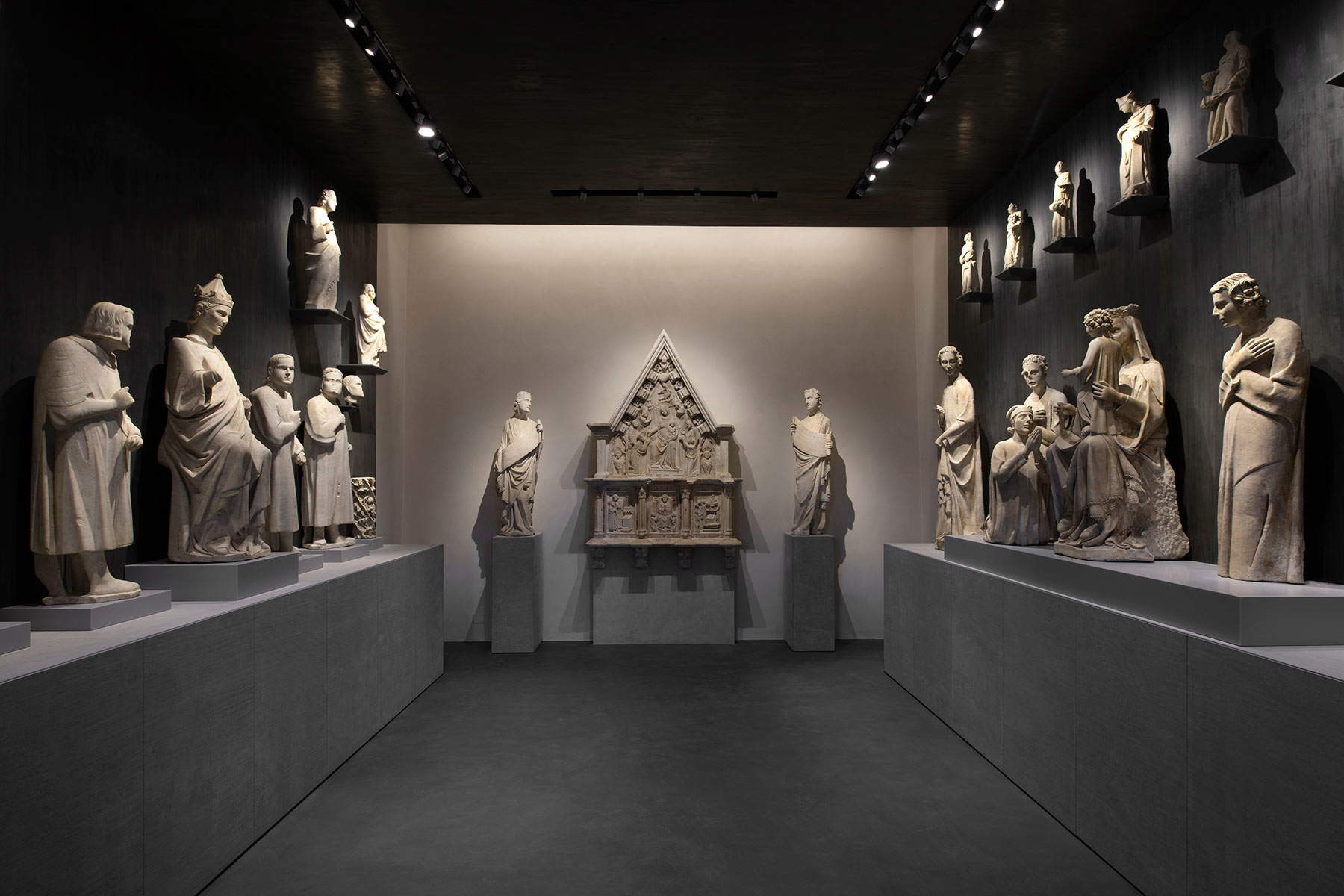
11. Keith Haring’s Tuttomondo Mural.
Keith Haring’s Tuttomondo mural is a contemporary artwork that is an exception in Pisa’s medieval art scene. Painted in 1989 by the American artist, it is located on the exterior wall of the Church of Sant’Antonio Abate. This mural is one of Haring’s few permanent works. The painting depicts several stylized figures symbolizing peace and harmony in the world, themes dear to the artist. The dynamic lines and bright colors give the work a special energy, contrasting with the city’s historical context. Tuttomondo is an example of how Pisa knows how to open up to contemporary art as well, maintaining a constant dialogue between ancient and modern.
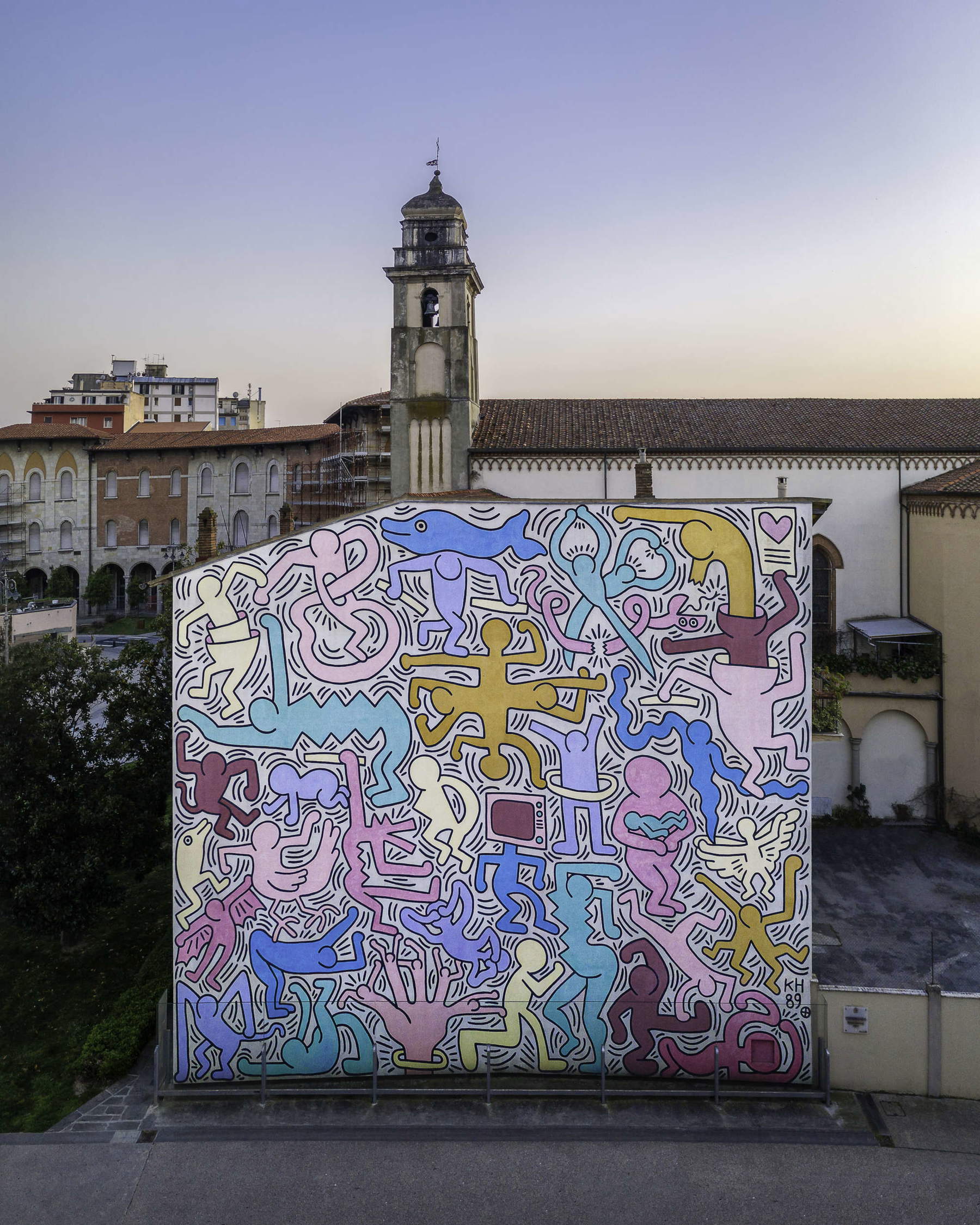
12. Pisa’s Lungarni
The Lungarni of Pisa are the streets that run along the banks of the Arno River, and they offer one of the most striking views of the city. The buildings lining these streets tell centuries of Pisa’s history, with elegant facades and picturesque views reflected in the water. Walking along the river, especially at sunset, is one of the most romantic experiences Pisa has to offer. Among the best-known buildings along the Lungarni are Blue Palace, home to exhibitions and cultural events, and the church of San Paolo a Ripa d’Arno, also known as the “Old Cathedral.” The Lungarni are also a great place to observe some of the city’s most important events, such as the Luminara di San Ranieri, a celebration that sees the buildings along the river lit up with thousands of candles.
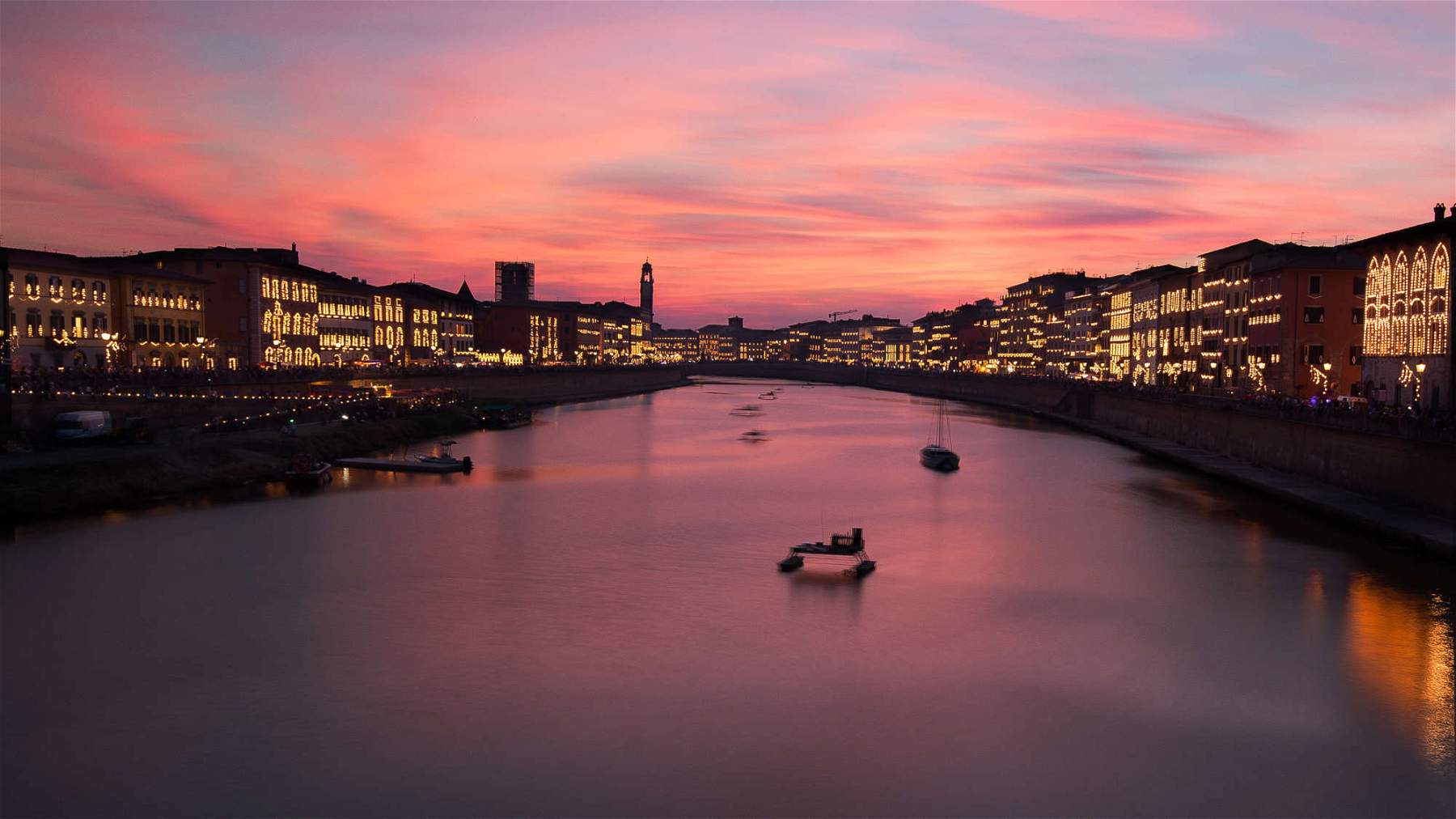
13. The Scotto Garden
The Scotto Garden is a green oasis located along the historic walls of Pisa. It is a public park built inside a fortress built starting in 1440 to defend the city from outside attacks. Today the garden is a place for Pisan citizens to relax and a meeting point for cultural and recreational events. Inside the garden you can find large green spaces, ancient trees and a space used for summer performances. The historic part of the fortress is still visible, and walking through the park one can imagine the military past of this place, which today is instead dedicated to relaxation and recreation.
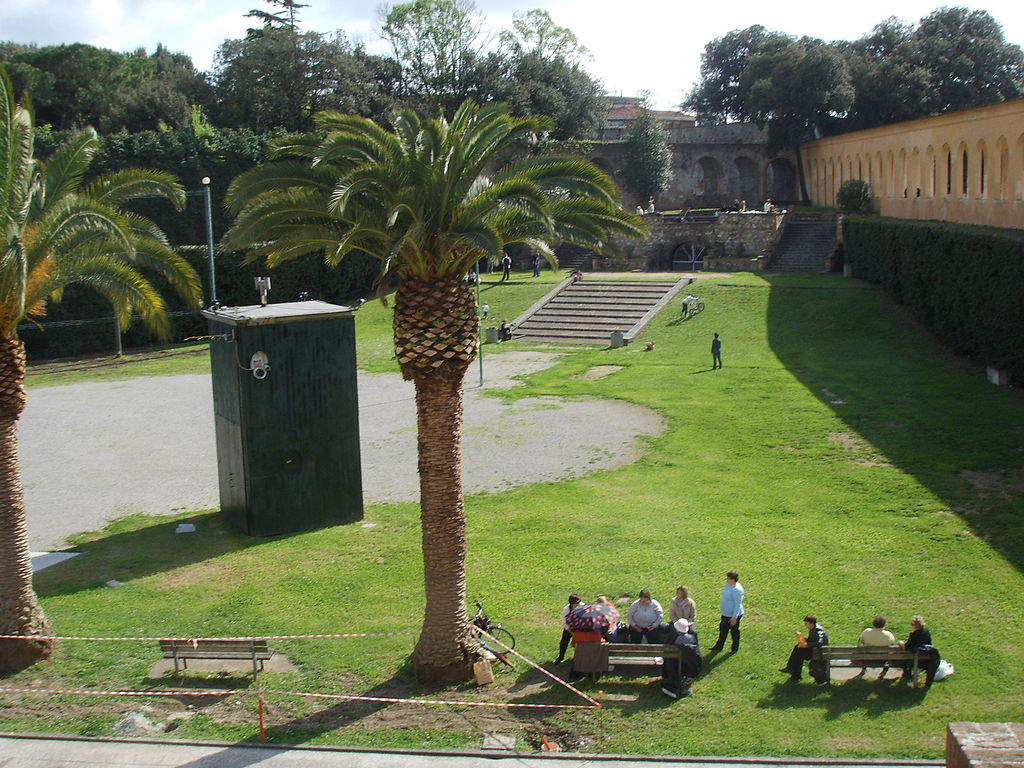
14. The Botanical Garden of Pisa
TheBotanical Garden of Pisa, founded in 1543 at the behest of Cosimo I de’ Medici, is one of the oldest university botanical gardens in the world. Today it is managed by the University of Pisa and houses a rich collection of plants from all over the world. The garden is divided into several sections, including a medicinal plant garden, an arboretum and a tropical greenhouse. The Botanical Garden is a great place to walk among nature and discover the countless plant species cultivated for scientific and research purposes.
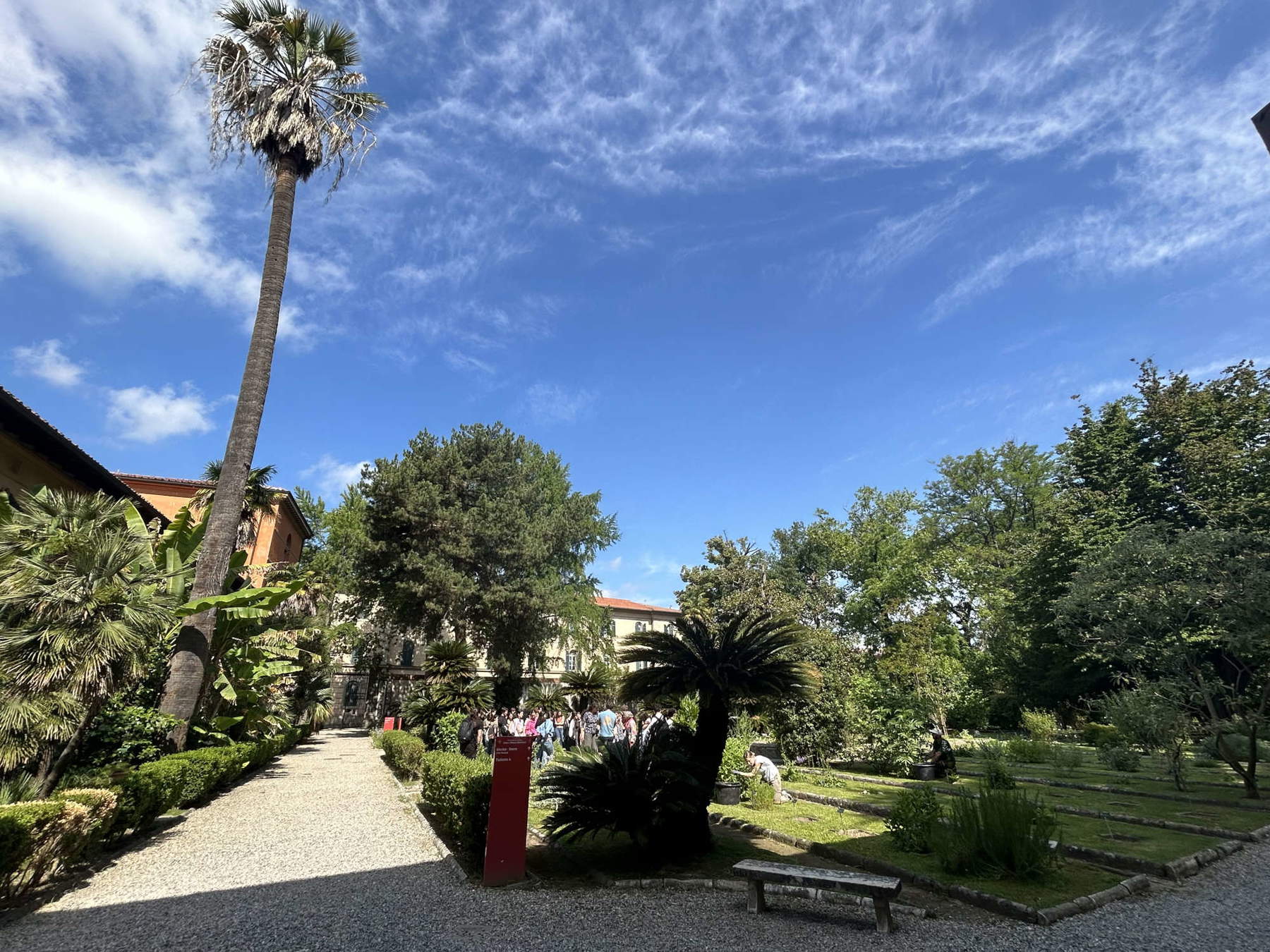
15. Blue Palace
Blue Palace is a cultural center located on the Lungarni, famous for its temporary art and history exhibitions, and is the name by which Palazzo Giuli Rosselmini Gualandi is commonly known. The building, built between the 14th and 15th centuries, was restored in 2008 and is now one of Pisa’s cultural landmarks. In addition to temporary exhibitions, Blue Palace houses a permanent collection of works of art spanning from the Middle Ages to the 20th century. Among the artists featured are such illustrious names as Nino Pisano, Benozzo Gozzoli, Aurelio Lomi, Artemisia Gentileschi, and Orazio Gentileschi. The frescoed rooms offer a glimpse of Pisan aristocratic life over the centuries. The palace is also a venue for conferences, concerts and cultural events.
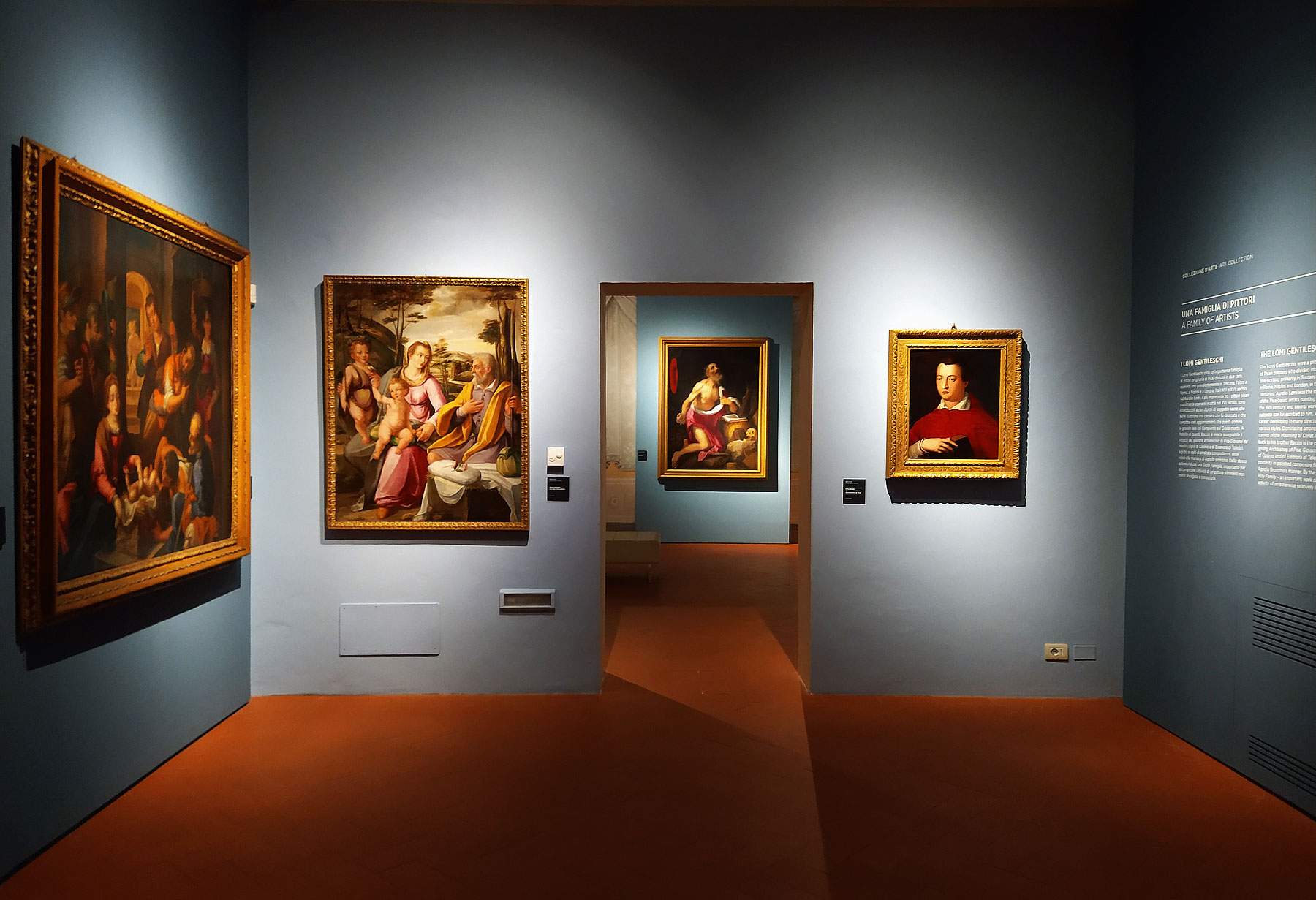
 |
| Pisa, what to see: 15 places not to miss |
Warning: the translation into English of the original Italian article was created using automatic tools. We undertake to review all articles, but we do not guarantee the total absence of inaccuracies in the translation due to the program. You can find the original by clicking on the ITA button. If you find any mistake,please contact us.






